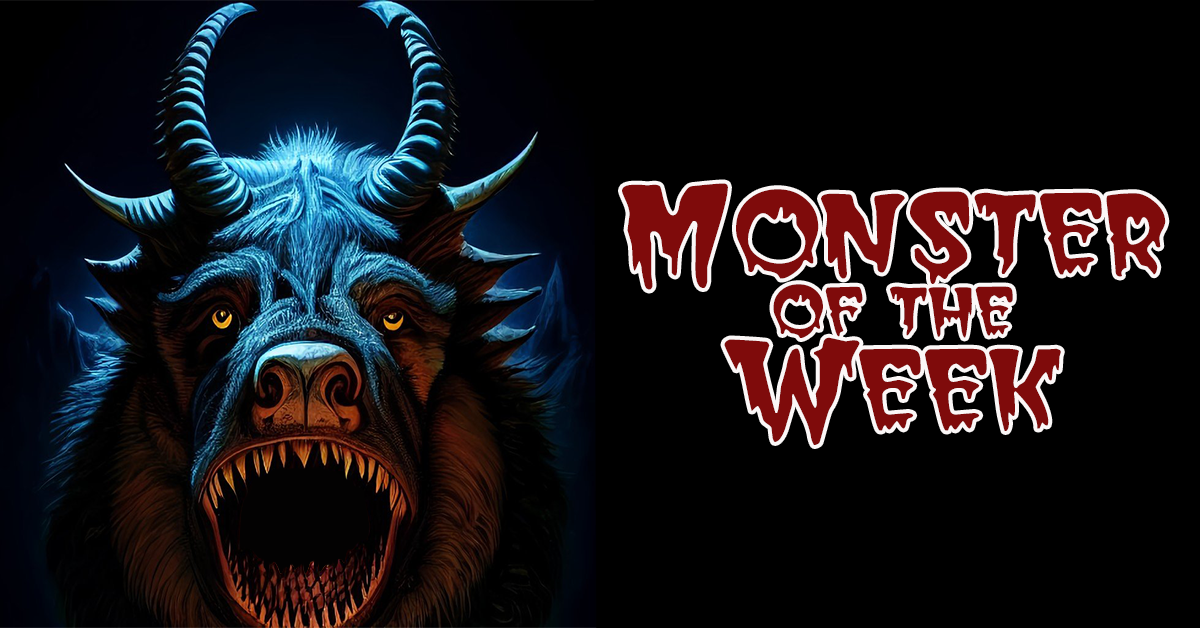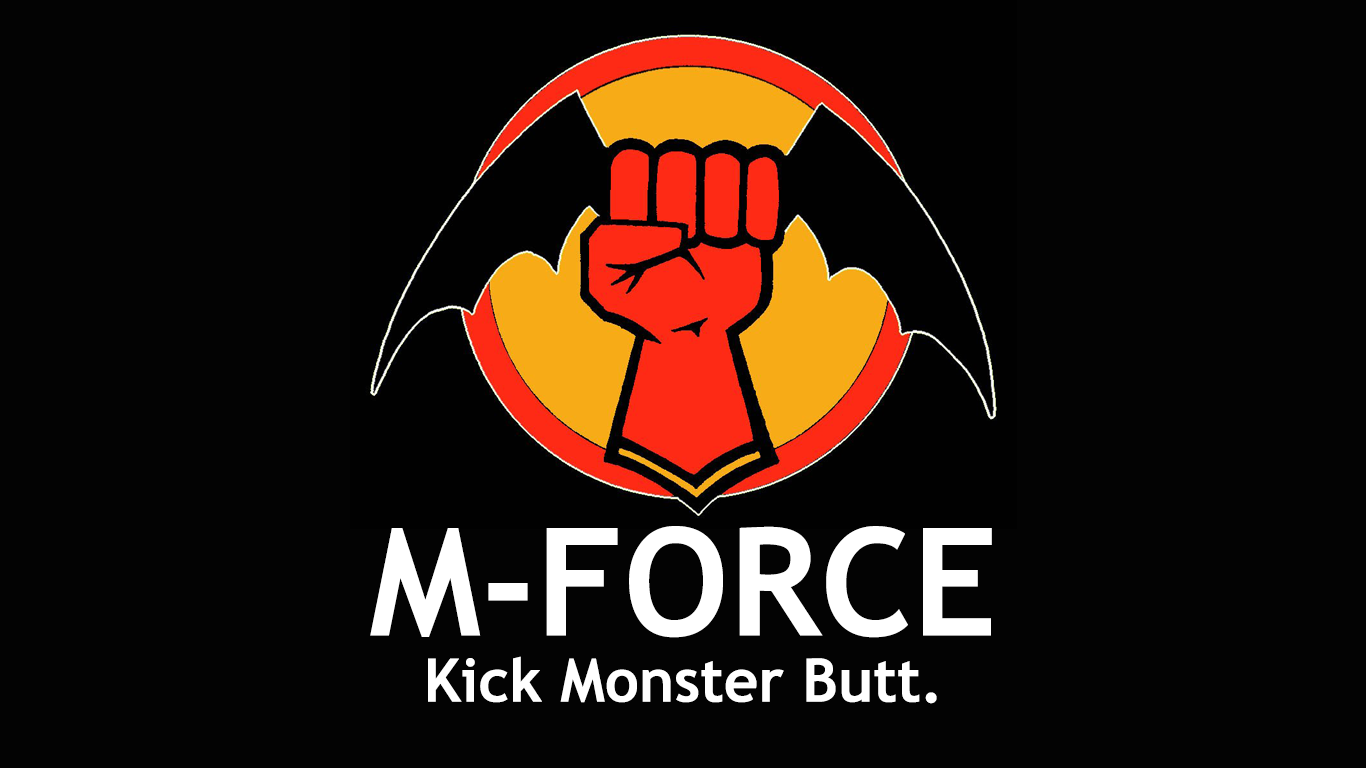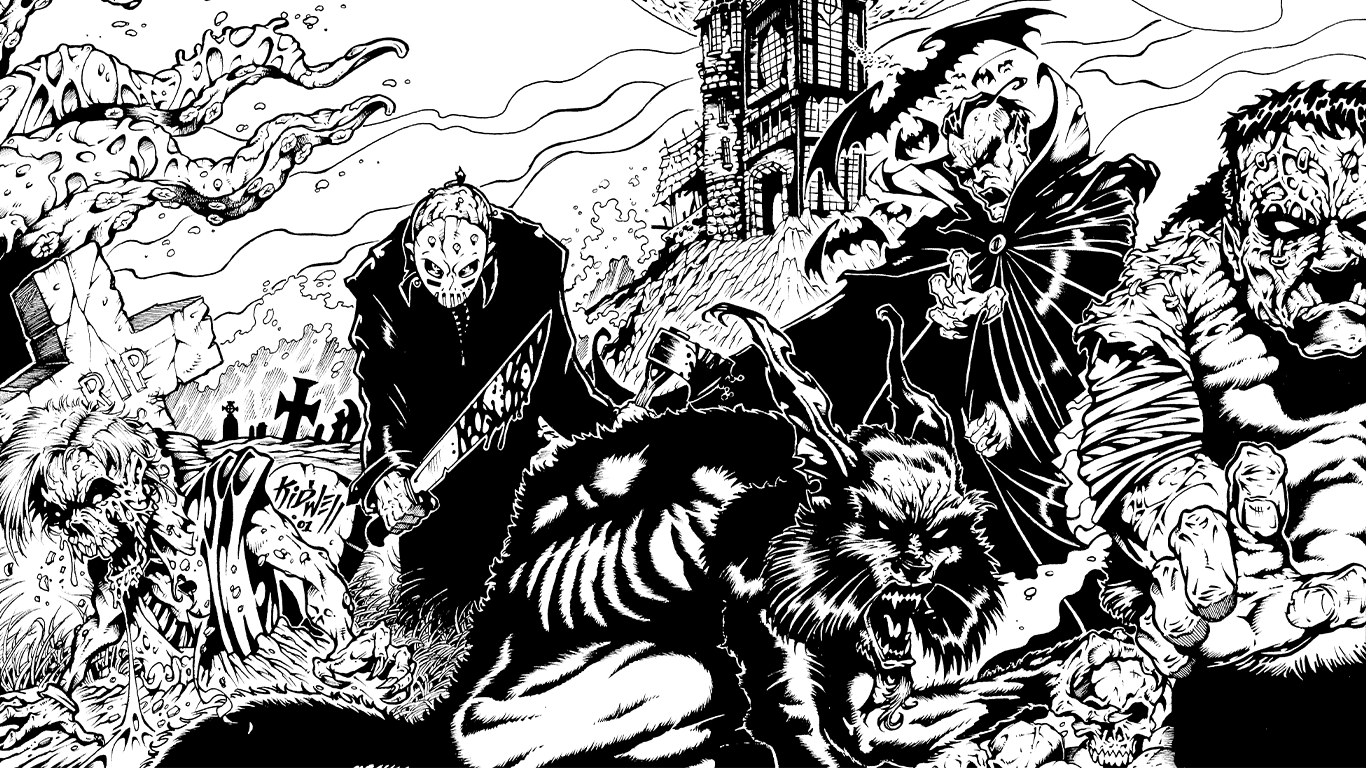We may earn money or products from the companies mentioned in this post.
Also Known As: Duende (Latin America, Philippines, Portugal, Spain), Hiisi (Finland), Kallikantzaros (Greek)
Description: Goblins are small, ugly humanoids three to four feet tall. They have thin, spindly arms and legs, large yellow eyes, slightly pointed ears, and mouths full of small, pointed teeth. Their thick, rubbery skin ranges in color from brownish green to black. Some agents have noted that goblins bear some resemblance to Gollum in the Lord of the Rings movies.
BMA Classification: Goblins are malicious humanoids who eat human flesh, and therefore are classified as monsters by the Bureau of Monster Affairs.
Powers: Goblins are very stealthy and are masters of ambushes and group tactics. They are also skilled at setting up simple traps. Agents entering a goblin lair should be extremely alert of their surroundings.
Vulnerabilities: Goblins do not like bright light and can be temporarily blinded or distracted by spotlights and other bright light sources.
Biology and Habitat: Although the word “goblin” is sometimes used to describe certain malicious types of fairies, the creatures that M-Force classifies as goblins are terrestrial monsters. Goblins usually make their lairs in natural caverns, often in deep forests or jungles, but with the spread of humanity they’ve adapted to living in mines, sewers, and abandoned buildings (where they usually nest in crawlspaces, ventilation or heating ducts, and basements).
Goblins are not particularly intelligent, but they are extremely cunning when it comes to setting simple traps and ambushes. They are capable of simple tool use, and occasionally attack with clubs or by throwing rocks. Goblins have their own simple language that consists mainly of grunts, growls, and clicks, but are capable of learning simple commands in other languages, and the more intelligent goblins can learn to speak a broken form of any human language they hear spoken regularly.
Goblins like to collect shiny objects and their nests are often filled with loose change, costume jewelry, bits of scrap metal, colorful bits of glass, and the like. If goblins are not attacking or being attacked, they can sometimes be distracted or bribed with shiny things.
Goblins live in groups called broods that can range in size from a few dozen to several hundred. The size of a brood is limited only by the supply of available food. If food is plentiful, goblins have extremely high rates of reproduction. If food becomes scarce, the brood will deteriorate rapidly as they resort to cannibalism. Goblins mainly eat raw, preferably freshly-killed, meat of all kinds and seem especially fond of eyes and tongues.
Sightings: Stories of goblins date back to the earliest human civilizations, though in these stories they are often confused with fairies and other creatures. The creatures are found on every continent except for Antarctica, usually in mountainous areas or extremely thick forests and jungles. They seem to prefer temperate or hot, humid climates, but can be found nearly anywhere. In the United States, large goblin broods are known to exist in the Appalachian and Ozark mountain ranges, the Pacific Northwest, and the larger forests of the Midwest and South.
Additional Information: In the past decade, goblin encounters have become increasingly common in cities, where they usually live in sewers or abandoned buildings. Most goblins found in civilized areas are minions of the Shadow Guild, who often use them as spies and cannon fodder.
Body: 11
Brain: 7
Nerve: 11
Job: Hunter (13)
Gimmick: Ambush (13)–When a goblin (or group of goblins) is able to lie in wait for his opponent, make a Gimmick roll resisted by the target’s Brain roll. If the Goblin wins, the opponent’s first roll suffers a penalty equal to the difference of the rolls.
Mob Attack (16)–A group of goblins may gang up on an opponent by making a Gimmick roll. If the roll succeeds, the goblins attack as a single creature (using the “Goblin Mob” stats, below) for the duration of the current battle or until the mob is reduced to two or fewer goblins.
Weakness: Bright Lights (12)–When a goblin encounters bright light, roll this Weakness. If the Weakness takes effect, the goblin suffers a penalty to all rolls. The penalty starts out equal to the Weakness roll and goes down by one each round. On a roll of 10 or higher, the goblin must make a Nerve roll or attempt to run away from the light.
Skills: Stealth +3; Track by scent +2; Set Traps +2
Armor Rating: 2
Damage Bonus: +2
HP: 11
Yum Yums: 1
Goblin Mob:
At least 3 goblins must act together to form a mob. A maximum of 8 goblins may attack a character at a time.
Body: 11 +1/goblin
Brain: 7
Nerve: 14
Job: Goblin Mob (13 +1 for every 2 goblins)
Gimmick: Ambush (13)
Weakness: Bright Lights (12)
Skills: NA
Armor Rating: 3
Damage Bonus: +1/goblin
HP: 11/Goblin–Specific goblins in the mob cannot be targeted. For every 13 points of damage that the mob takes, one goblin in the mob is killed. If there is a goblin nearby who is not engaged in combat when a member of the mob is killed, he may join the mob by making a successful Mob Attack roll. When the mob is reduced to two goblins, the remaining H.P. are divided evenly between them.
YY: NA
Optional Rule: If a goblin or goblin mob rolls a lucky break AND the opponent rolls a natural 20, the goblin has managed to bite or claw out the victim’s eye or tongue. Roll 1d20 to determine which: 1-8: left eye; 9-16: right eye; 17+ tongue. A character missing an eye gains the “One-Eyed” Weakness at 15. (Roll whenever the character’s lack of depth perception or peripheral vision could be a problem (including when making ranged attacks). If the Weakness takes effect, the action suffers a penalty equal to the Weakness roll). A character whose tongue is ripped out gains the “Speech Impediment” Weakness at 15 (Whenever the character tries to speak to someone, they must roll Weakness versus the listener’s Brain roll. If the listener wins, he understands the message. The Weakness roll may be waived for people who are used to the character’s tongueless speech at the GM’s discretion).
Goblin Traps: Goblins regularly set traps in their lairs, usually rigging piles of debris to fall on someone, weakening floor supports, or camouflaging large holes as solid ground so that people will fall into them. The GM should assign any such trap a Difficulty Number between 5 and 15. When a character nears the trap, he makes a Brain roll against the DN. If the character succeeds, he notices the trap and can avoid it. Otherwise, he sets off the trap and must immediately make a Body roll against the trap’s DN. If the player wins, he avoids the trap. If the DN is higher, he takes damage equal to the DN minus his roll and is partially immobilized (buried under rocks, leg hung in floor, etc), suffering -4 to all actions until he spends two full rounds digging himself out or wriggling his way loose of the trap.



